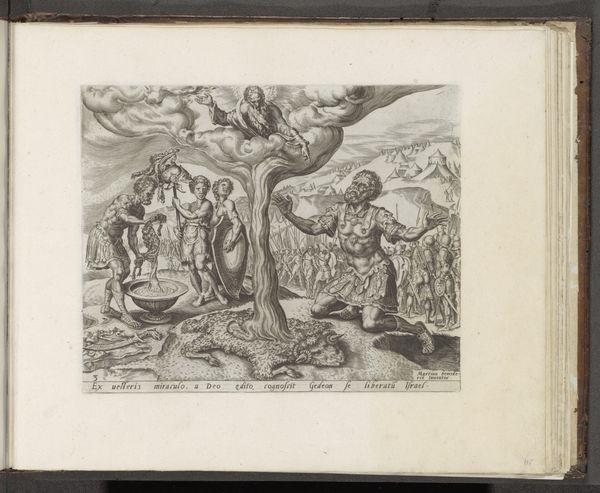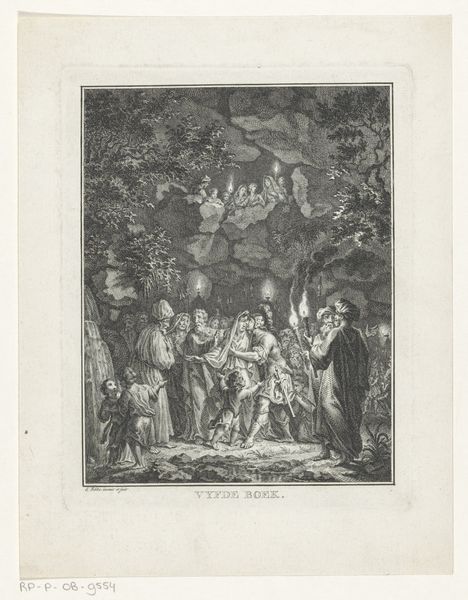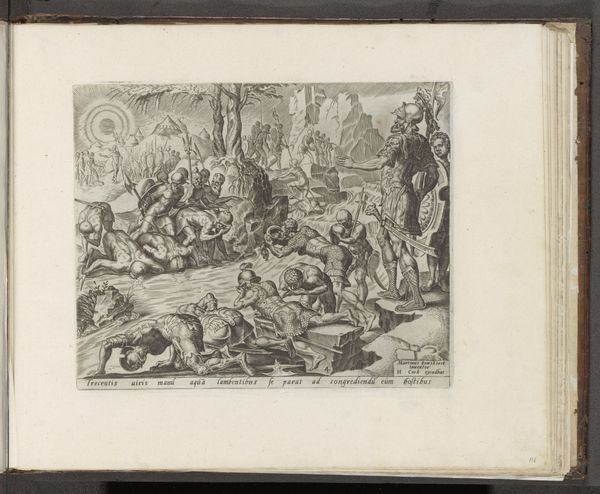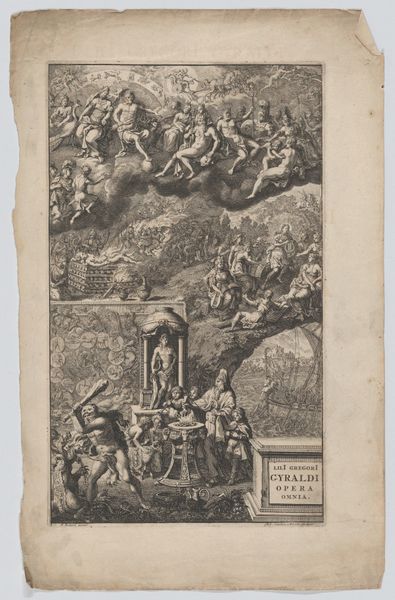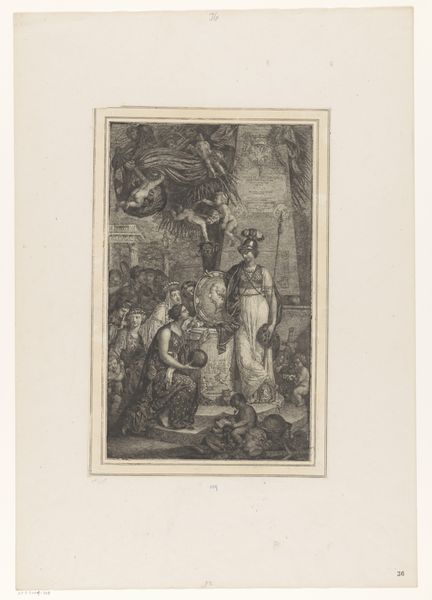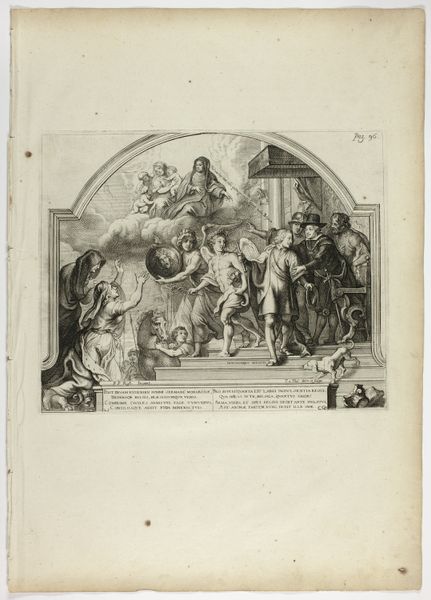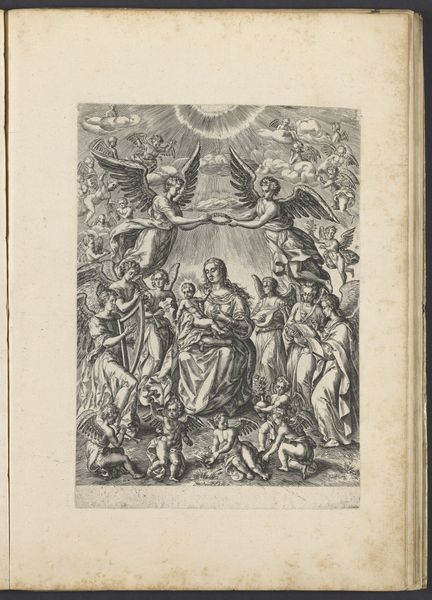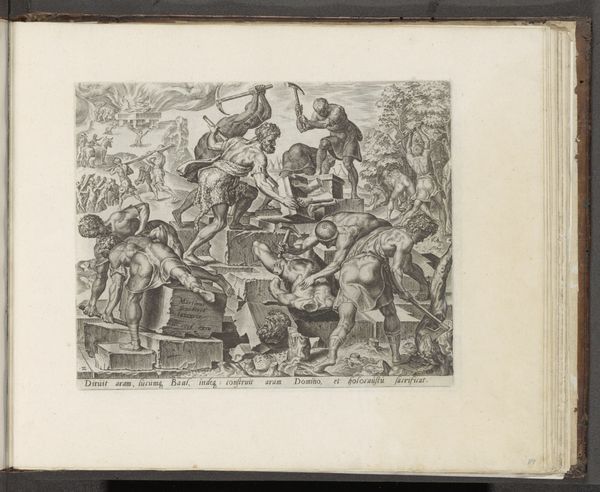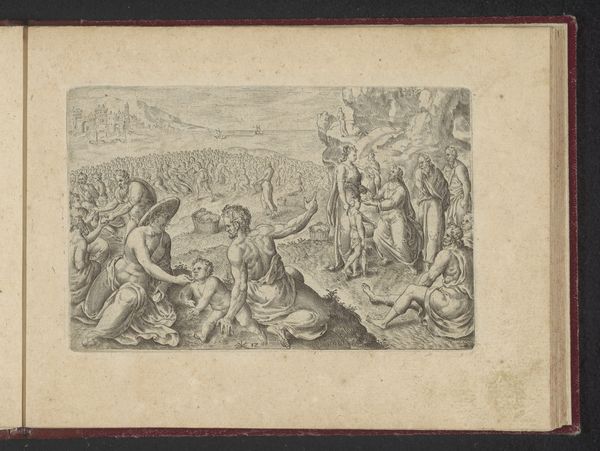
Fresco in de Sixtijnse Kapel te Vaticaanstad, voorstellende het Laatste Oordeel c. 1875 - 1907
0:00
0:00
print, etching, fresco
#
high-renaissance
#
allegory
#
narrative-art
# print
#
etching
#
fresco
#
history-painting
Dimensions: height 250 mm, width 192 mm
Copyright: Rijks Museum: Open Domain
This is a photograph of Michelangelo's fresco of the Last Judgement in the Sistine Chapel in the Vatican, captured by Edizione Brogi. A fresco is made by painting on freshly laid lime plaster with pigments mixed in water. The binding medium is the plaster itself, meaning the image becomes integral to the wall. The whiteness of the lime is key, so it's a bit of a shame to only see the image in black and white here. But you can still appreciate how Michelangelo created depth and drama, largely through his understanding of human anatomy. Now, think about the labor involved in creating this fresco. The physical effort to prepare the wall, mix the plaster, and apply the pigments while standing on scaffolding must have been extraordinary. Michelangelo certainly didn't do this alone. It's interesting to consider the social context of this artwork. The Catholic Church was a powerful patron, and the Last Judgement was intended to inspire awe and reverence. But it also reflects the humanist ideals of the Renaissance, with its emphasis on the human form and its exploration of complex theological themes. Considering the materials, making, and context enriches our understanding, and challenges traditional distinctions between fine art and craft.
Comments
No comments
Be the first to comment and join the conversation on the ultimate creative platform.
